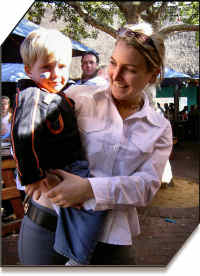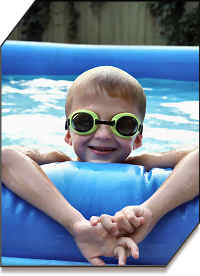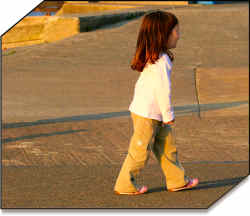When Do Informal Parenting Arrangements For Child Need Approval from the State?
Professor Dan Pollack contacted me several months ago requesting some input about this topic from the perspective of an Ohio family law attorney. Dan is an excellent writer and has posted articles as a guest Contributor to the Ohio Family Law Blog since 2009. I was pleased to see that my comments made it to his recent article published in Policy & Practice, 74 (2), 25, 28-29. Thanks Dan! Keep up your quality scholarship and writing!
 It is axiomatic that ideally it is best for children to be cared for by their parents. Yet, on an informal basis, thousands of children reside for extended periods of time with a caregiver who is not their parent. Often they are the child’s relatives, sometimes they are friends or acquaintances of the child’s family. This may be done to accommodate unique family dynamics, after-school or social activities, or for a variety of other reasons. Such time-efficient and cost-effective parenting arrangements are accomplished without involving any lawyers or signing any legally binding documents. All things being equal, is there an expectation that such parenting arrangements have to be sanctioned by the state?… Read More... “Parenting Arrangements: Experts Weigh in on Temporary Guardianship for Child”
It is axiomatic that ideally it is best for children to be cared for by their parents. Yet, on an informal basis, thousands of children reside for extended periods of time with a caregiver who is not their parent. Often they are the child’s relatives, sometimes they are friends or acquaintances of the child’s family. This may be done to accommodate unique family dynamics, after-school or social activities, or for a variety of other reasons. Such time-efficient and cost-effective parenting arrangements are accomplished without involving any lawyers or signing any legally binding documents. All things being equal, is there an expectation that such parenting arrangements have to be sanctioned by the state?… Read More... “Parenting Arrangements: Experts Weigh in on Temporary Guardianship for Child”


 A healthy 3-year-old is placed in a foster home. A month later, a 16-year-old with a history of borderline personality disorder is placed in the same home. Without permission, the 16-year-old decides to give the 3-year-old a bath. Tragically, the 3-year-old drowns. Whatever the exact circumstances, and the foster parents’ behavior and liability aside, was it negligent of the agency initially to place the teenager in the same home as the young child?
A healthy 3-year-old is placed in a foster home. A month later, a 16-year-old with a history of borderline personality disorder is placed in the same home. Without permission, the 16-year-old decides to give the 3-year-old a bath. Tragically, the 3-year-old drowns. Whatever the exact circumstances, and the foster parents’ behavior and liability aside, was it negligent of the agency initially to place the teenager in the same home as the young child? Water. It can be so much fun, but oh so dangerous. The National Safe Kids Campaign (2004) reports that “drowning is the second leading cause of unintentional injury-related death among children ages 1–14 and the leading cause of unintentional injury-related death among children ages 1–4. The majority of drownings and near-drownings occur in residential swimming pools and in open water sites.” Furthermore, in 2004, “approximately 2,300 children ages 14 and under died from unintentional injuries that occurred in the home. Nearly 80 percent of these deaths were among children ages 4 and under.”
Water. It can be so much fun, but oh so dangerous. The National Safe Kids Campaign (2004) reports that “drowning is the second leading cause of unintentional injury-related death among children ages 1–14 and the leading cause of unintentional injury-related death among children ages 1–4. The majority of drownings and near-drownings occur in residential swimming pools and in open water sites.” Furthermore, in 2004, “approximately 2,300 children ages 14 and under died from unintentional injuries that occurred in the home. Nearly 80 percent of these deaths were among children ages 4 and under.” The National Runaway Switchboard reports that between 1.6 and 2.8 million youth run away each year. It also reports that there has been “a significant increase in the number of crisis calls identifying abuse or neglect as a reason for the call, with abuse calls up 33 percent and neglect calls up 54 percent between 2005-2008″ (National Runaway Switchboard Crisis Caller Trends, 2009, p. 2).
The National Runaway Switchboard reports that between 1.6 and 2.8 million youth run away each year. It also reports that there has been “a significant increase in the number of crisis calls identifying abuse or neglect as a reason for the call, with abuse calls up 33 percent and neglect calls up 54 percent between 2005-2008″ (National Runaway Switchboard Crisis Caller Trends, 2009, p. 2).